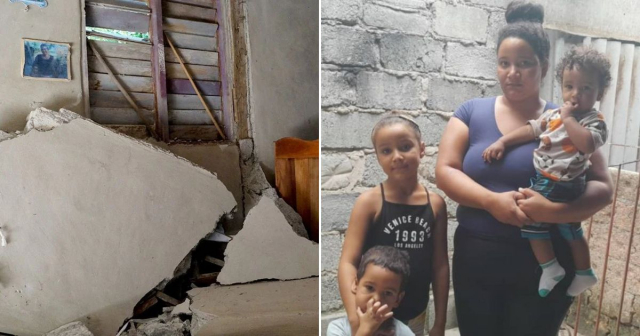A 4.2 magnitude earthquake was felt in several municipalities in the provinces of Granma and Santiago de Cuba shortly after six in the morning on Tuesday, according to a report on social media by Enrique Diego Arango Arias, Head of the National Seismological Service at the National Center for Seismological Research (CENAIS).
Arango Arias specified that the tremor occurred exactly at 6:11 a.m. and was felt "in several localities of the province of Granma and in the municipalities of Guamá and Santiago de Cuba."
The earthquake was located at coordinates 19.75 degrees north latitude and 77.23 degrees west longitude, approximately 20.51 kilometers southwest of Pilón, in Granma, at a depth of 10 kilometers.

"If it was strong, it was quick," wrote an internet user in the comments section who confirmed feeling it.
Other residents in the area reported not feeling it, but expressed concern about the increasing seismic activity in the region in recent days.
CENAIS stated on its website that since the earthquakes of 6.0 and 6.7 degrees occurred on November 10, a total of 4,559 aftershocks have been recorded to date.
From the total number of aftershocks, the agency specified that 106 have been "presumably perceptible"; and one, occurring this morning, has been reported as "strongly felt at 6:11 local time, with a magnitude of 4.2."
"The tension in the East is ongoing. Another noticeable earthquake," stated the official journalist Lázaro Manuel Alonso on Facebook, commenting on the most recent seismic event in the country.
In 2023, the National Center for Seismological Research reported a total of 7,475 earthquakes in the country, although only 14 were felt by the population.
The magnitudes of those events ranged from less than 3 to 5.9 degrees, and 70% of them were concentrated on the Oriente fault.
This year, the most significant seismic activity occurred on November 10 in Granma, where two consecutive earthquakes were recorded, measuring 6.0 and another at 6.7.
Despite being considered minor due to their short duration (the 6.7 tremor only lasted seven seconds), they caused property damage and more than a dozen injuries.
Filed under:






